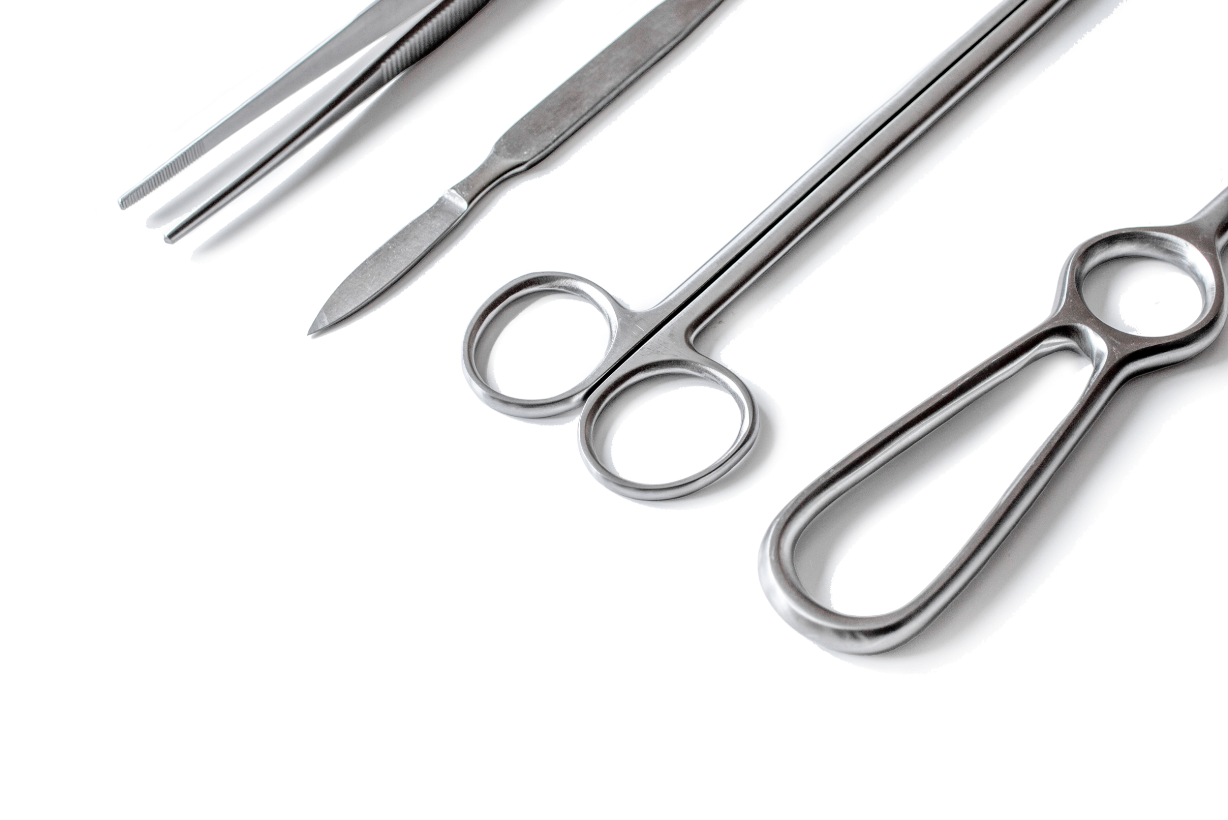How Does It Work?
Over time, once teeth are removed or lost, the jawbone associated with missing teeth atrophies (begins to resorb and shrink). This often results in poor quantity and quality of bone. If the jawbone has resorbed severely, the placement of dental implants is not possible.
There are surgical procedures that give us the ability to improve the quantity of bone available. This gives patients the opportunity to have dental implants placed that are of proper length and width. Our surgeons can provide you with a number of different options to have the bone graft completed.
Types of Bone Grafts
Your body has many sites that can lend bone to build up your jaws. Our surgeons can harvest the bone from your hip (iliac crest), mandible (behind the molar teeth), tibia (shin) or skull (cranium). Apart from the mandible, these surgeries are usually carried out in an operating room and may require a hospital stay. The benefit of utilizing your own bone is the risks for disease transmission are minimized, and the risk of rejection/infection is reduced because we are using healthy, living bone cells as opposed to bottled bone powder. The bone is anchored to your jaw bone with the use of mini-screws and allowed to heal for several months. Once matured, the dental implants are placed and the mini screws are removed.
The thought of an operation for bone grafting can be daunting. but Dr. Scherle Our surgeons will explain all aspects of the procedure, and what type of bone grafting would be the most appropriate. Thankfully it is rare to require grafting that would require a hospital stay.
These surgeries are very technical and can only be performed by oral and maxillofacial surgeons
Bone Substitutes
There are many other choices when it comes to bone grafting including the use of processed bone substitutes. These options are provided as small bone chips in sterile bottles. They can be from animals (such as cows) or from certified cadaver banks (human). The advantage of them is there is no need for a second surgical site, and the result achieved can often be very comparable to using your own bone when used appropriately.
Sinus Augmentation (Sinus Lift)
The maxillary air sinuses are behind your cheek bones between your eye socket and your top jaw. These sinuses are empty hollows with nothing in them. Some roots of upper teeth extend into the air sinus which is completely normal if the teeth are healthy. If the upper teeth require removal, there is often a thin shell of bone separating the sinus from the mouth and on occasion a physical hole or tunnel can be caused just from a dental extraction. When the bone is this thin, dental implant placement is impossible without bone grafting.
The solution is a procedure called a sinus lift. Our surgeons can lift the thin membrane that lines the maxillary sinus with specialized instruments then pack bone graft material between the membrane and bone.
After several months of healing, the bone becomes part of the jaw and dental implants can be inserted and stabilized.
If enough bone between the upper jaw ridge and bottom of the sinus is available to stabilize the implant well, sinus augmentations and implant placement can be performed simultaneously. If not enough bone is available, the sinus bone graft will have to be performed first then allowed to heal for several months. Once the graft has matured, the implants can be placed.
After-Care
General Anesthesia/Intervenous Sedation
Following General Anesthesia or Intervenous Sedation, you are considered impaired for 24 hours. Do not operate a motor vehicle or make important decisions during this time frame. We recommend no consumption of alcohol or drugs during this period, or while taking the prescribed medications.
The more frequent you rinse with salt water, the better
Following surgery, some pain is normal and expected. Take the prescription pain medication as you feel necessary, not exceeding the daily maximum dose. Over-the-counter Tylenol or Advil can be just as helpful. Your surgeon will discuss this with you.
A small amount of bleeding is normal after the surgery. Your surgeon will discuss with you whether stitches were used during the procedure. Non-dissolving stitches will be removed at a follow-up 10-14d post-surgery when we assess healing. If dissolving sutures (stitches) were placed, they will typically fall out after 4-7 days.
Smoking
Smoking should be avoided for at least 7 days post operatively. It is the primary cause of delayed wound healing and infection.
Brushing Teeth
Brushing your teeth is critical post-operatively to minimize pain and infection. Brush at least after every meal for 7 days. The cleaner you keep your mouth, the more comfortable you will be. You may use a small baby toothbrush with soft bristles and either warm water or toothpaste. Keep the brush on the teeth. If you bump into one of the dissolving sutures (stitches) you will not do any harm.
Mouth Wash
You will be prescribed a medicated oral rinse (chlorhexidine 0.12%) that you will begin to use 24 hours post-operatively. Do not use products such as Scope or Listerine. Warm salt water may be used in replacement of the chlorhexidine (1/4 teaspoon of salt dissolved in 250ml of warm water). The most frequent you rinse with salt water, the better.
Swelling
Swelling is completely normal and expected. It will peak 2-5 days post operatively then begin to subside. This may extend under the chin and down the neck. Ice packs are helpful on the cheek (20 minutes on, 20 minutes off) on the first postoperative day. Warm packs will be beneficial starting on day 2 post surgery.
Pain
Following jaw surgery, some pain is normal and expected. Take the prescription pain medication as you feel necessary, not exceeding the daily maximum dose. Over the counter Tylenol or Advil can be just as helpful. Dr. Scherle will discuss this with you.
Bleeding
A small amount of bleeding is normal after the surgery. You will have dissolving sutures (stitches) along the gum line that will fall out after 5-7 days.
Diet
Cold fluids are recommended for the first 2-3 days. Smoothies, protein shakes, ice cream or yogurt are good options. You may then progress your diet as you are comfortable. Food that is easily cut with a fork (fish, pasta, eggs) may be trialed, eventually working your way back to a normal diet as quickly as you are comfortable. Let your knife and fork do the chewing for you. Lots of small bites will make any meal manageable.
Bruising
Bruising may occur post operatively and can extend from the face, beneath the chin and onto the chest/breast. This is normal and should not cause alarm. It will resolve within 7-10 days.
Follow-Up
Please call the office should you experience any postoperative issues or have any questions. We will schedule a follow up visit at your convenience.



